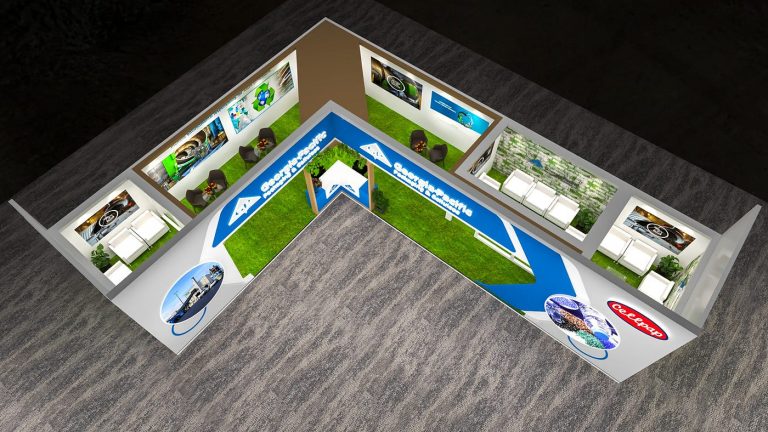Transforming Trade Shows: The Rise of Sustainable Exhibition Design
The Evolution of Green Exhibition Spaces
The exhibition industry is witnessing a remarkable transformation as exhibition stand builder embrace sustainable practices without compromising on creativity or visual impact. Today’s forward-thinking exhibition stand building companies are pioneering innovative approaches that merge aesthetic excellence with environmental responsibility. Leading exhibition stand contractors are now prioritizing eco-conscious solutions that address the traditionally wasteful nature of temporary display structures while meeting the growing demand for corporate sustainability commitments.
Why Sustainability Matters in Exhibition Design
Trade shows have historically generated significant waste. Traditional exhibition stands typically have a short lifespan, often being used for just a few days before being dismantled and discarded. This single-use approach results in tons of construction materials ending up in landfills after each event. Additionally, conventional building materials and processes often involve high carbon emissions, toxic chemicals, and inefficient resource usage.
Today’s conscious consumers and business partners increasingly expect brands to demonstrate environmental responsibility. Companies that showcase their commitment to sustainability through their exhibition presence can strengthen their brand image, connect with environmentally conscious audiences, and demonstrate alignment with global sustainability goals.
Innovative Materials Reshaping Exhibition Spaces
Recycled and Recyclable Components
Modern sustainable exhibition stands incorporate materials specifically chosen for their reduced environmental footprint. Recycled aluminum frames provide sturdy, lightweight structures that can be easily assembled and disassembled countless times. Biodegradable fabrics made from organic cotton, hemp, or recycled polyester serve as attractive graphic surfaces while avoiding petrochemical-based alternatives.
Renewable Resources
Bamboo has emerged as a superstar material in sustainable exhibition design. This rapidly renewable resource grows incredibly quickly—up to 91 cm per day for some species—making it an excellent sustainable alternative to traditional hardwoods. Similarly, cork offers acoustic benefits alongside its sustainability credentials, while reclaimed timber brings unique character and history to stand designs.
Alternative Materials
Innovative materials like mycelium (fungus-based) panels, compressed agricultural waste, and recycled plastic composites are providing exhibition designers with expanded creative possibilities while maintaining environmental integrity. These alternatives offer similar structural properties to conventional materials but with dramatically reduced ecological impact.
Design Strategies for Sustainable Exhibitions
Modular Design Philosophy
The most environmentally responsible exhibition stand is one that never becomes waste. Leading contractors now design with longevity in mind, creating modular systems that can be reconfigured for different spaces, themes, and purposes. This approach extends the useful life of exhibition components indefinitely, dramatically reducing the need for new materials.
Minimalist Aesthetics
Embracing the “less is more” principle allows designers to create impactful spaces with fewer resources. Clean lines, thoughtful negative space, and strategic lighting can create memorable brand experiences without excessive material usage. This approach aligns perfectly with contemporary design preferences while supporting sustainability goals.
Digital Integration
Incorporating digital elements reduces the need for physical graphics that quickly become outdated. Interactive displays, augmented reality experiences, and digital signage can deliver dynamic content that can be updated instantly without producing new physical materials. This technology-forward approach keeps exhibitions fresh while minimizing waste.
Practical Implementation Approaches
Rental and Reuse Systems
Many exhibition contractors now offer rental programs for sustainable display systems. These programs provide clients with professionally designed, high-quality exhibition solutions without the need to purchase, store, or dispose of materials. After use, components return to inventory for reconditioning and redeployment.
End-of-Life Planning
Responsible exhibition stand builders now consider what happens to materials after they’ve served their purpose. Designing with disassembly in mind ensures materials can be easily separated for proper recycling or repurposing. Some innovative companies have even implemented take-back programs, accepting responsibility for the materials they supply.
Carbon Offsetting
While reducing material impact is critical, exhibition participation inevitably involves some carbon footprint. Progressive exhibition contractors offer carbon offsetting options, investing in renewable energy projects or reforestation initiatives to balance the environmental impact of exhibition activities.
Measuring Success: Beyond Aesthetics
Environmental Impact Assessment
Leading sustainable exhibition stand contractors now provide clients with detailed environmental impact assessments. These reports quantify resource savings, carbon reductions, and waste diversion achievements compared to conventional approaches. This data allows exhibitors to demonstrate tangible sustainability gains to stakeholders.
Certification and Standards
Industry certifications like ISO 20121 (Sustainable Events) provide frameworks for measuring and improving exhibition sustainability. Forward-thinking contractors pursue these certifications to validate their environmental claims and demonstrate their commitment to continuous improvement in sustainable practices.
Challenges and Future Directions
Despite impressive advances, sustainable exhibition design still faces challenges. Higher initial costs for some eco-friendly materials can deter budget-conscious exhibitors. Limited availability of certain sustainable options in some regions creates logistics challenges. However, as demand grows and technologies advance, these barriers continue to diminish.
The future of exhibition stand building looks increasingly green. Emerging technologies like 3D printing with biodegradable materials promise to revolutionize custom exhibition elements with minimal waste. Biomimicry—design inspired by nature’s efficient systems—is providing new sustainable design approaches. Meanwhile, circular economy principles are becoming more deeply embedded in exhibition planning, ensuring materials maintain their highest value through multiple lifecycles.
Conclusion
The shift toward sustainable exhibition stand design represents more than just an environmental trend—it’s a fundamental reimagining of how brands can create meaningful connections with audiences while respecting planetary boundaries. By embracing innovative materials, thoughtful design strategies, and responsible end-of-life planning, exhibition stand contractors are demonstrating that sustainability and stunning visual impact can go hand in hand.
As industry standards continue to evolve and clientexpectations grow, the most successful exhibition professionals will be those who view sustainability not as a constraint but as a catalyst for innovation. The exhibition stands of tomorrow will be judged not only on their visual impact but on their environmental credentials—and forward-thinking builders are already rising to this challenge.






